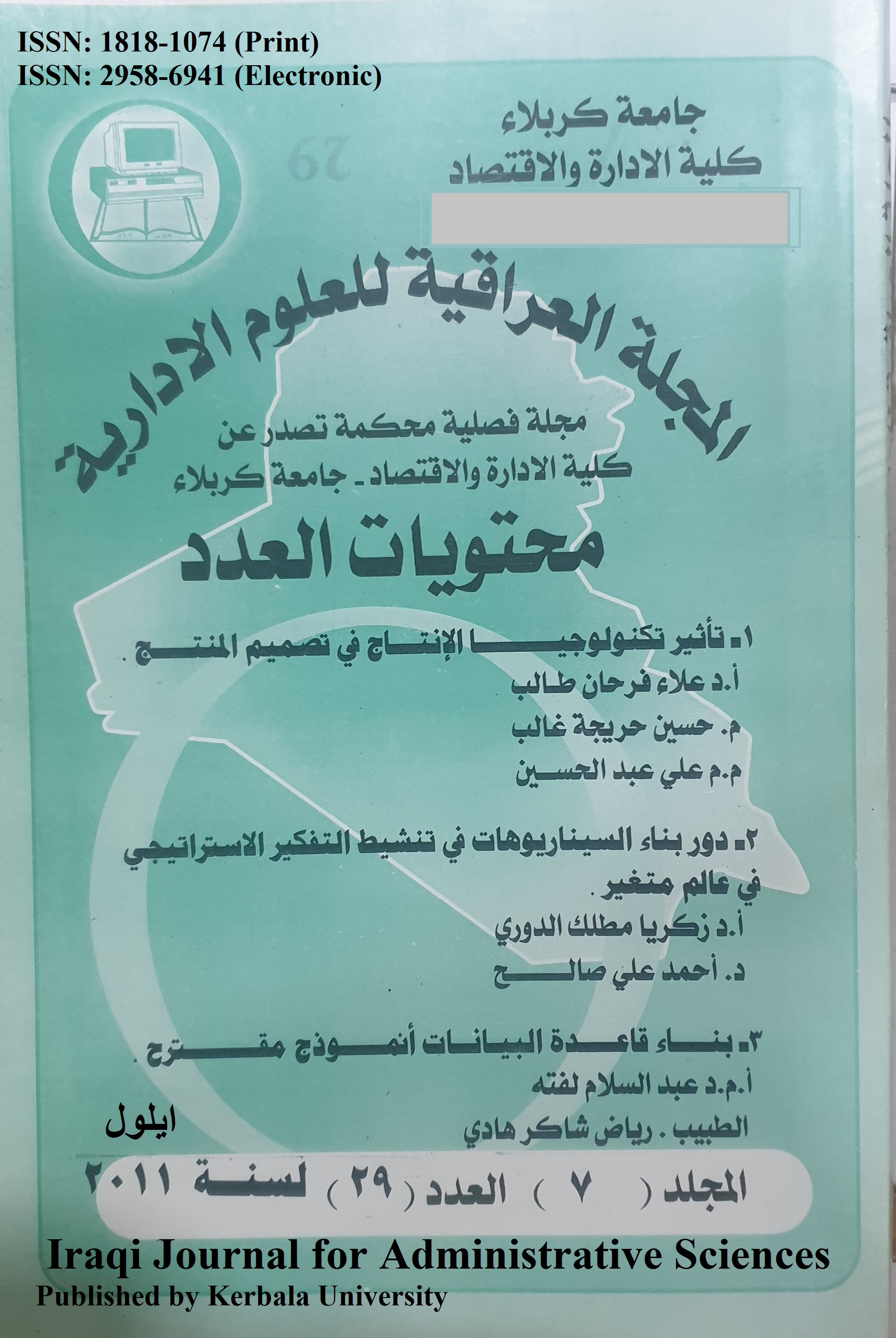Capabilities of information technology and its impact on the strategic agility A case study in the General Company for the manufacture of medicines and medical supplies in Nineveh
Keywords:
Information technology, strategic movementAbstract
Research was the testing and analysis of my relationship with the link and impact between the capabilities of information technologies and the willingness to change the strategic based on the idea of an investment philosophy of agility strategy of B (focus, speed and flexibility), which is now imposing itself in recent times as the entrance appropriate to address the environmental changes taking place in organizations in the exercise of its order for its survival. It was carried out the practical side in the General Company for Pharmaceuticals and Medical Supplies in Nineveh, but all appointed Vanhsrt managers within the levels of senior management and the middle, who are altogether (48) Director, who distributed them forms, questionnaire, and restore them (35) form suitable for analysis, representing the proportion of response rate (72.91%). And used a set of statistical tools which were represented by: (coefficient of Cronbach alpha, simple correlation, simple linear regression) and may reach Search of testing referred to a number of conclusions, most notably that the capacity of information technologies associated with moral status of owning organizations to the elements of agility strategy and affect them, and under that was introduced a number of conclusions that are diagnosed and examined, the reality of the organization, as well as proposals that are important in encouraging organizations to strengthen the capacity of information technologies to be used as an appropriate tool to address the cases of strategic change and preparedness.
Downloads
Published
How to Cite
Issue
Section
License
Copyright (c) 2011 College of Administration and Economics - University of Karbala

This work is licensed under a Creative Commons Attribution-NonCommercial-NoDerivatives 4.0 International License.
Authors retain the copyright of their papers without restrictions.




